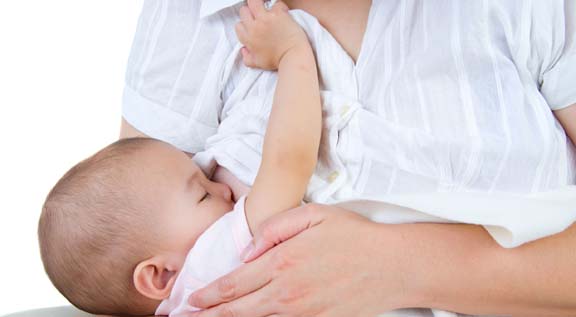Mastitis – Causes, Signs, Symptoms and Treatment
Mastitis is an inflammation of the breast tissue which when left untreated may lead to an infection of the breast.
The most common causes of inflammation are:
- Damage of the nipple
- Long breaks between breastfeeds
- Full breasts
- Blocked milk ducts
- Stopping breastfeeding too quickly
- Wearing tight bras, etc.
However, the most common cause of inflammation is lactation. Mastitis which results from breastfeeding usually occurs within the first 6-12 weeks after childbirth.
Mastitis Risk Factors
Risk factors that can lead to mastitis include:
- Stress and tiredness
- Poor nutrition
- An inflammation of the breasts (Mastitis) in the past
- Sore or cracked nipples (Read also:Nipple Pain Causes)
- Using only one position to breastfeed. A wrong position while breastfeeding will not allow the breasts to drain completely.
Signs and symptoms of Mastitis vary from mild, moderate to severe. Usually flu – like symptoms present in the beginning with temperature, fever, chills and joints pain while redness and soreness of an area on the breast show up later.
Mastitis Treatment, Brooklyn
Treatment should be started as soon as disease is diagnosed. Heat packs or warm clothes should be put on top of the sore area before breastfeeding in order to help the milk flow. If you are having no problems with the milk flow, that warm packs or warm clothes are not needed. Keep in mind that breast milk is safe for your baby, so keep breastfeeding even though you have mastitis. Gently massage your breasts, especially any breast lumps toward the nipples when breastfeeding your child or when having a shower or bath. In cases when you experience a lot of pain, Ibuprofen might help to relieve it. Also cool packs put on the breasts after breastfeeding might help you reduce the discomfort. Rest as much as possible, try to sleep as much as you can, eat well and drink plenty of water during the day.
If after all these things, you still continue to feel sick and your condition is getting worse, you should go and see a doctor as soon as you can. In some cases antibiotics are necessary to treat Mastitis.
If this disease is not treated correctly and on time it can lead to a collection of puss inside of the breast tissue and formation of an abscess. Abscesses usually require surgical drainage.
How to Prevent Mastitis?
There are some little things you can do for your breasts in order to prevent disease. Specially, you should take care of your breasts while breastfeeding. In order to prevent a possible mastitis, you should breastfeed your baby at least 8-12 times a day (this is for the newborns, but as the baby grows the period between breastfeeding gets longer). You should not miss a breastfeed. Don’t let your breasts to get full of milk. Instead wake up your baby and feed. Feed your baby with both of your breasts. If the baby only feeds from one breast, offer the other one during the next feed. If your breasts still feel full after breastfeeding, you should express the over amount of milk until your breasts feel comfortable. Avoid wearing tight bras and other tight clothes. Avoid pressure on your breasts with fingers while breastfeeding. Try to get as much rest as you can during breastfeeding.
